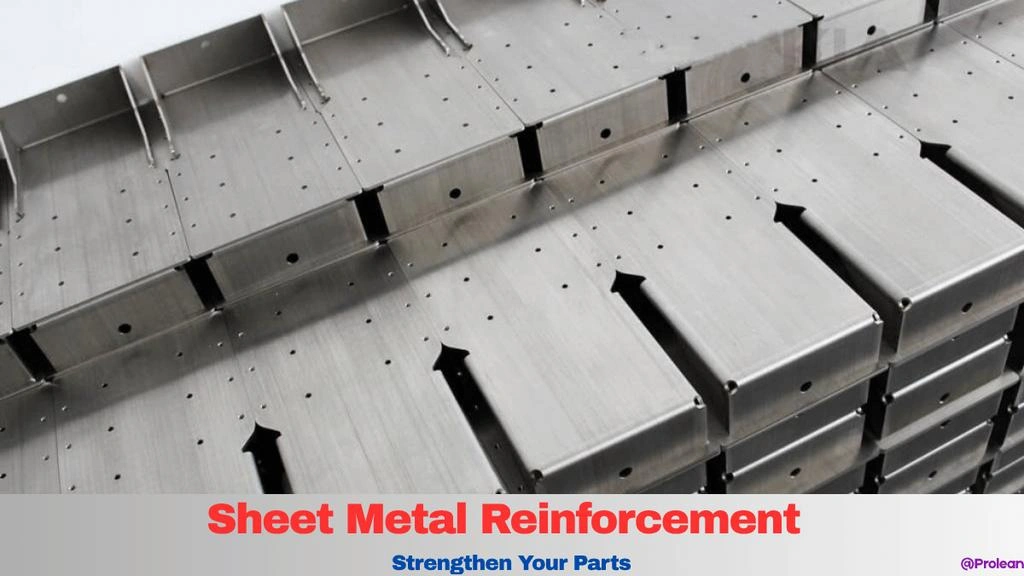
Sheet metal reinforcement
Have you ever noticed ribs, flanged flanges, and welding brackets on your desktop enclosure? These are called reinforcements added to sheet metal parts to make the structure more robust and durable. Besides these, there are several other types or ways to add the reinforcement.
Typically, these reinforcements are considered in sheet metal bending services from the very beginning of part conceptualization and design to achieve the desired strength and functionality.
The upcoming sections of this article will cover 11 key reinforcement techniques applicable to parts made with sheet metal bending methods or any other fabrication processes. We will also elaborate on types of strength, design rules for parts strengthening, and how to choose the right reinforcement technique.
What is Sheet Metal Reinforcement?
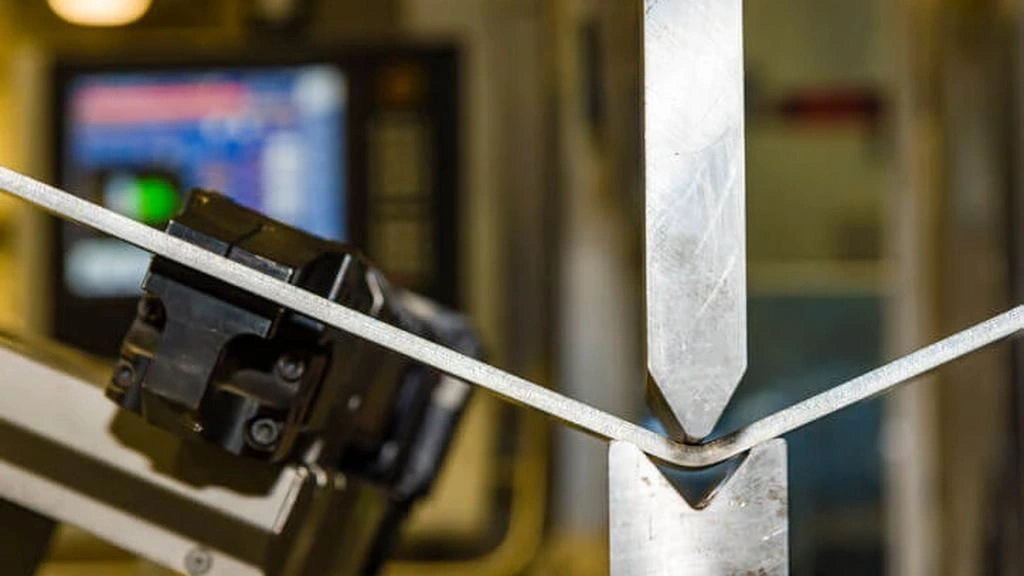
Reinforced bending
Sheet metal reinforcement is a process of adding different features (or even additional components) to improve the mechanical strength, stress resistance, and structural integrity. It is essential in sheet metal fabrication for overall performance and safety.
Manufacturers can directly add reinforcement elements to sheet metal by integrating advanced CNC machining procedures, including milling, drilling, grooving, welding, laser cutting, and stamping. This also maintains production accuracy and consistency.
You can see reinforcement in various sheet metal parts, such as panels, enclosures, auto fenders, construction elements, mounting brackets, and heat sinks.
Why Sheet Metal Reinforcement is Needed?
Since the fabrication process involves applying deformation forces to shape the sheet metal, they possess a risk of overbending, cracking, and stretching under high stress. Therefore, you need sheet metal reinforcement. Reinforcement features maintain the structural integrity of formed components.
Here are the five reasons why you need reinforcements like ribs, hems, bends, and fanges:
- To prevent bending or flexing under applied stress for deformation.
- To maintain the original shape of the worksheet under punch impact or stress.
- To provide additional support to manage heavy loads.
- To increase longevity and durability
- To keep machines and cars structurally stable.
Types of Mechanical Strengths Required For Sheet Metal
There are eight major types of mechanical strength to define the overall strength and structural integrity of metal parts. It includes Tensile, shear, yield, compressive, impact, fatigue, bending/formability, and creep strength.
Let’s take a look at the types of strength in the table below:
| Strength | Definition | Why It Matters? |
| Tensile strength | It defines the stress a sheet can withstand while being pulled before it fractures. | Essential to determine the deformation load during metal forming. |
| Shear strength | It is resistant to cutting & punching. | Useful in shear operations, fastener shear loads, and edge integrity in notched parts. |
| Yield strength | The stress level at which the sheet begins to deform plastically. | It helps to ensure safe forming limits and allowable stresses in metal forming processes. |
| Compressive strength | The maximum compressive stress the material can tolerate before buckling, crushing, or failure. | Important that parts carry compressive loads, such as straps, short columns, and stamped ribs. |
| Impact strength | Ability to absorb sudden or shock loads without any fractures. | It predicts how well sheet parts survive drops, bangs, or sudden collisions. |
| Fatigue strength | The maximum cyclic stress sheet can withstand a specified number of cycles. | a crucial consideration for components exposed to repeated loads |
| Bending / Formability | It defines the ability of the sheet to undergo bending, stretching, and drawing without any failure. | It directly controls manufacturability, springback, minimum bend radius, and other bending variables. |
| Creep strength | Resistance to slow, time-dependent deformation under sustained load and elevated temperature. | Relevant for sheets used at high temperatures or under constant loads like exhaust shields. |
What are the Steps to Reinforce Sheet Metal?
Let’s take a look at the individual steps involved in sheet metal reinforcement:
- Choose Sheet Thickness: The process of reinforcing sheet metal begins with analysing the physical & mechanical properties of the sheet metal and ensuring the correct thickness for the desired application.
- Decide Reinforcing Methods: Then, you need to choose the reinforcing methods to achieve the required stiffness.
- Process Execution: Perform the chosen reinforcement methods in a correct sequence.
- Reinforcement Testing: Check the final stiffness, strength, and other properties of the reinforced item through measurement. You can also perform destructive tests.
Sheet Metal Reinforcement Techniques
Some reinforcement techniques involve forming or creating specific features, such as holes, cutouts, bent edges, and notches. Others are related to inserting secondary elements or joining parts, such as riveting and welding.
Let’s elaborate on the 11 key reinforcement techniques for sheet metal parts:
- Edge Bending
- Edge Hemming
- Profile Stretching
- Adding Falnges
- Adding Groove Seams
- Welding
- Riveting
- Small Hole Punching
- Nut & Bolts
- Tapering of Bend
- Triangular Ribs
Edge Bending
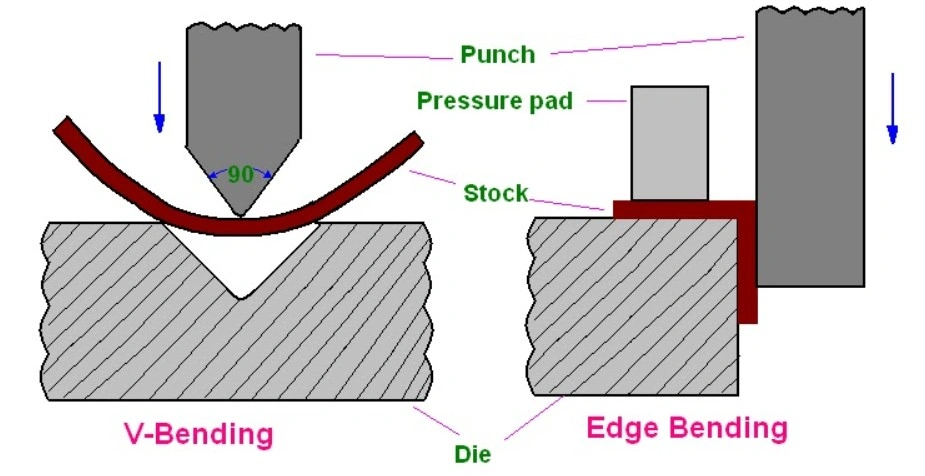
Edge bending & V-bending
Bending the edge of the sheet metal part is a simple yet effective technique for reinforcement. You can bend edges at a specific angle or shape, like 45° or 135°. It adds strength along the edges and improves structural integrity. The straight edges are more prone to bending and wrapping, and this also makes them harder to handle.
- Benefits: Simple yet cost-effective, it reduces vibration and improves the section modulus, eliminating the need for additional joints or support.
- Limitation: Not suitable for small-sized parts & risk of material damage at the bending line.
- When to Use: Use for thin metal parts, typically parts with 1 to 3mm thickness.
Edge Hemming
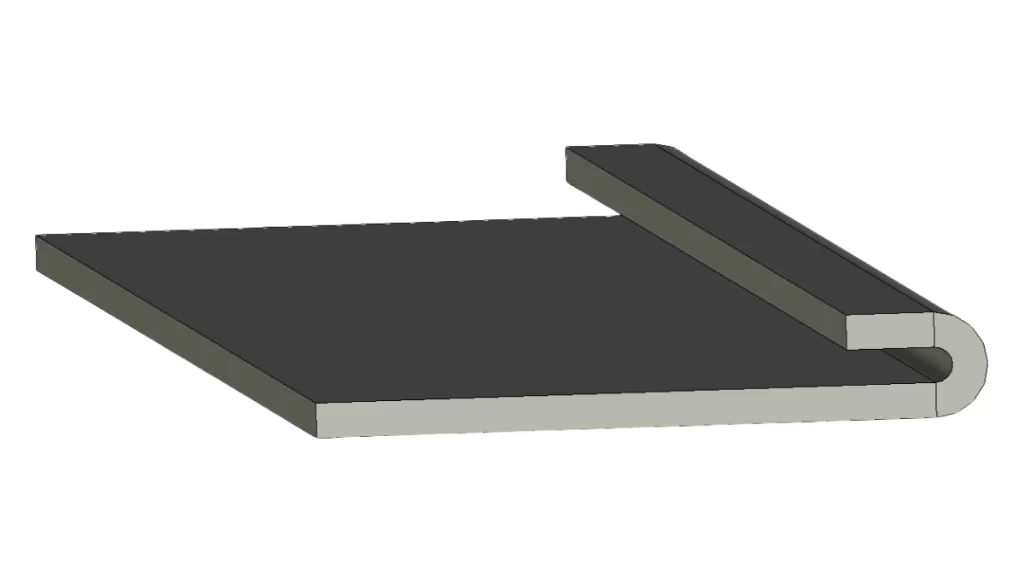
Sheet metal hemming
Hemming refers to the process of bending straight edges to a smooth round or a specific angular form. It enhances the rigidity of parts, aesthetic appeal, and handling safety.
- Benefits: Hemmed edges enhance bending strength, structural rigidity, and make parts more visually appealing, while also preventing wear & wrapping.
- Limitations: Increases die & tooling costs and makes the forming process more complex.
- When to Use: Use for parts with a thickness of 0.5–2 mm, where safety, aesthetics, and durability are critical.
Metal Profile Stretching
This technique fundamentally changes the micro-structure, arranging grains in a specific direction to modify the mechanical properties of the sheet. After stretching, the sheet material becomes more robust and durable.
- Benefits: Economical process, smooth surface finish, stress distribution, and higher mechanical strength.
- Limitation: Stretching is not suitable for complex parts and is a relatively slower process.
- When to Use: For thin to medium-thickness, curved sheet metal items that require reinforcement and precise shaping, stretch forming is the ideal choice.
Adding Flanges
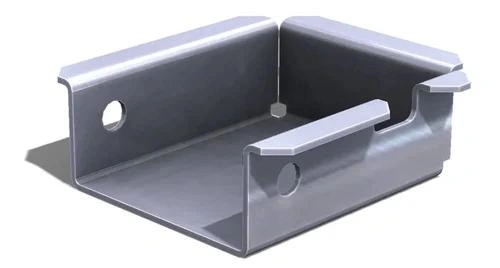
Flange
Flanges are the small, bent lips or rounded sections along the sheet metal edges. This fold helps to distribute the stress and prevent wear. Typically, designers keep the flange sizes more than four times the sheet thickness
- Benefits: Dimensional stability, higher edge rigidity, and surface for joining(riveting, bolting, etc).
- Limitation: Higher material cost and longer cycle times.
- When to Use: Suitable for medium- to thick sheets used in structural frames, automobile panels, enclosures, and other applications that require high edge strength.
Adding Grooved Seams
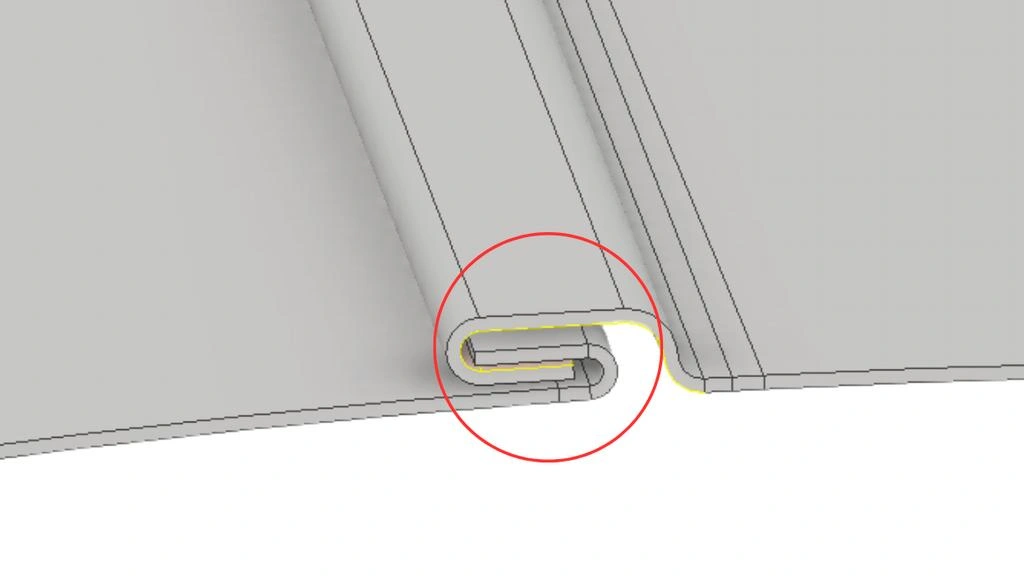 Grooved seams
Grooved seams
Grooved seams are formed by pressing & rolling the thib channels on the edges of the sheet. It does not require any additional components to join. The grooves can be interlocked to hook multiple parts together.
- Benefits: An economical technique that adds strength & improves rigidity, and facilitates easy maintenance.
- Limitations: Relatively complex & time-consuming, and more skill-oriented process.
- When to Use: Grooved joints are commonly used in piping systems that transport gases, water, air, and other fluids.
Welding
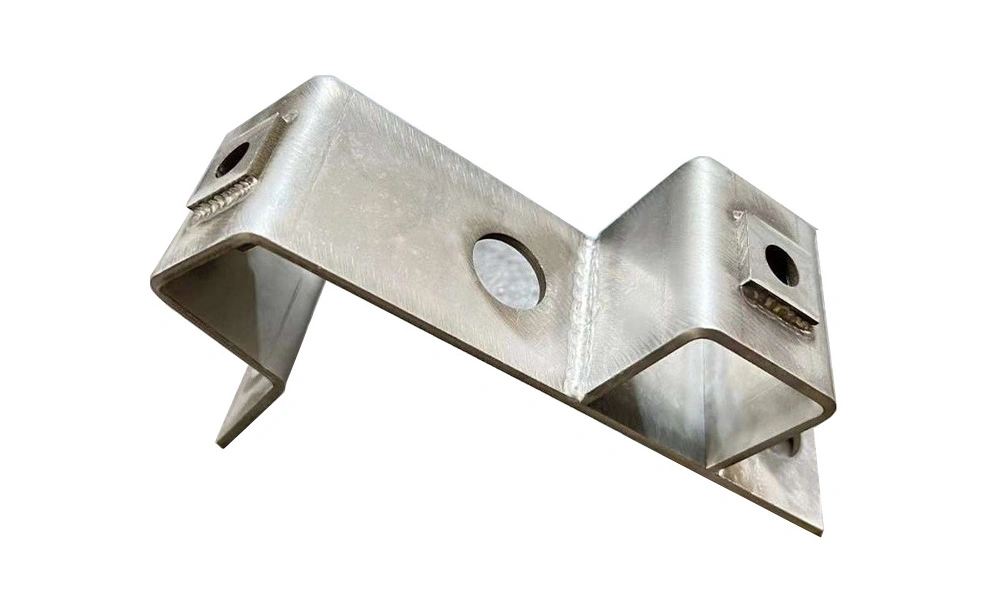 Metal sheet welding
Metal sheet welding
Welding joins two or more sheet metal components permanently by applying heat and pressure; sometimes, consumable materials are also required. Welding metals involves joining the material at the point of contact and forming metallurgical bonds, which are strong, reliable, and long-lasting. The common sheet metal welding methods are Arc, TIG, MIC, and spot welding.
- Benefits: Design flexibility, robust permanent joint, joining of dissimilar materials, and cost-effectiveness.
- Limitations: Strain and residual stress may occur, making it impossible to disassemble when needed.
- When to Use: For parts or products requiring robust, airtight joints, such as those found in shipbuilding, aviation, and the automotive industry.
Riveting
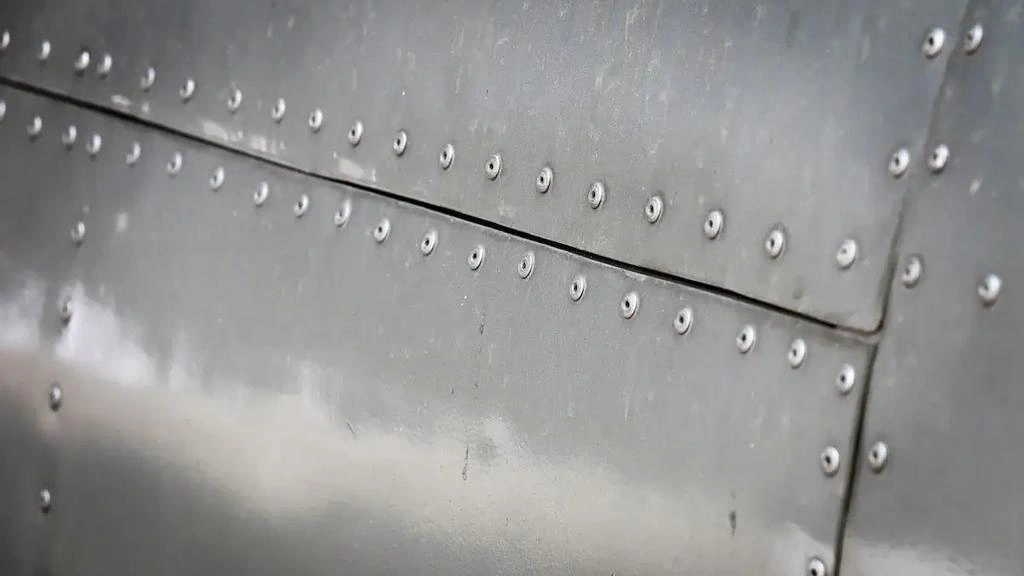
Sheet metal rivets
In the riveting process, a rivet is inserted into pre-drilled holes in the material, and its tail end is deformed up to 1.5 times the rivet shaft diameter, resulting in a secure connection. Unlike welding, it does not use intense heat and preserves the original thermal properties at the joining area.
- Benefits: Versatility in rivet styles and material choices, resistant to severe environments, simpler to install, and a quicker method.
- Limitations: Riveting adds weight to parts. Although these can make permanent joints, they are ideal for semi-permanent joints.
- When to Use: To join dissimilar sheets and secure the assembly.
Small Hole Punching
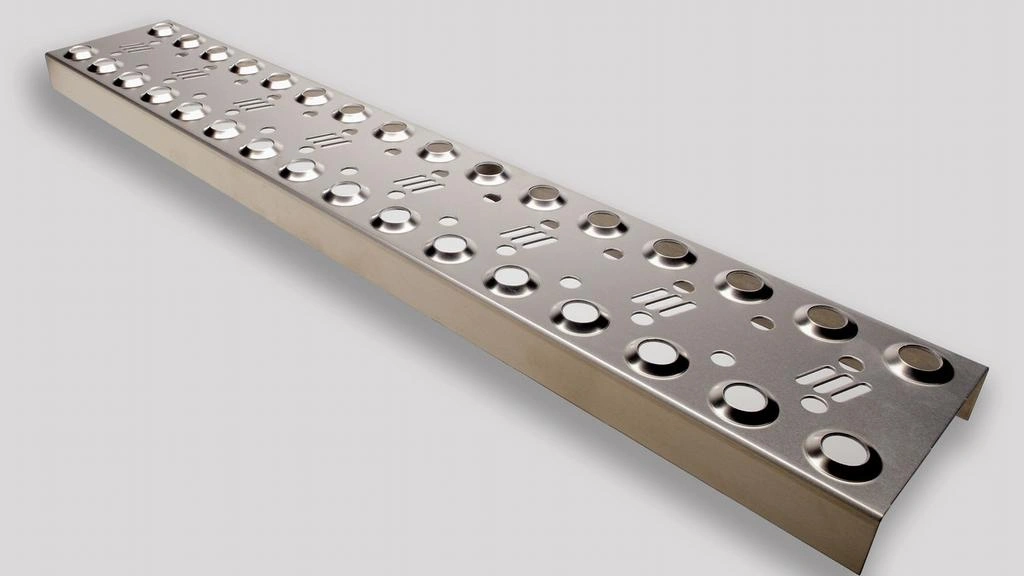
Small punched holes
Small punched holes in sheet metals facilitate the smooth stress distribution and avoid concentration. As a result, tensile strength increases, which minimizes the localized failures. If it does not affect the functionality of parts, punch small holes with a diameter equal to the material thickness.
- Benefits: Weight reduction without significantly compromising the strength, and an economical process.
- Limitations: Any error in hole positions weakens the structural integrity of sheet metal.
- When to Use: Use small hole punching for weight reduction and better stress distribution.
Using Nut and Bolts
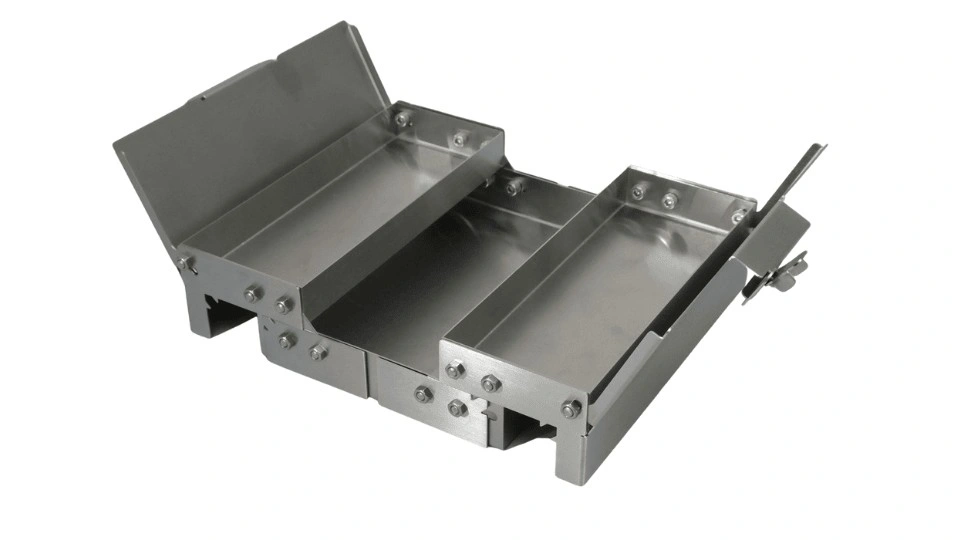
Sheet metal bolts
Nuts and bolts are the threaded fasteners that work in pairs to join multiple sheet components. The external threaded bolt is inserted into a pre-tapped hole, and the nut is installed from the opposite side to ensure mating. This can be used for simple metal brackets to complex shipbuilding components.
- Benefits: Flexibility in both assembly and disassembly, simple installation, and customization options.
- Limitations: Not as strong as welding, and the bolt material must be compatible with the worksheet material.
- When to Use: From light to heavy-duty applications to reduce vibration and facilitate easy disassembly when needed.
Tapering of Bend
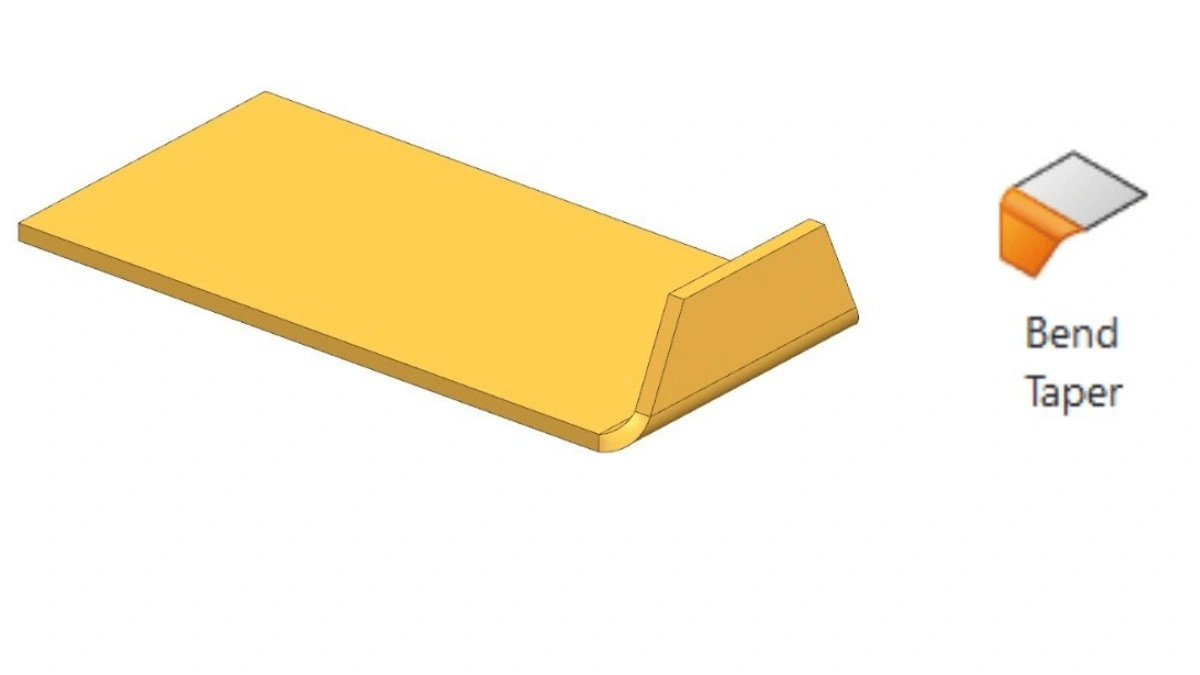
tapered bend
This method involves reducing the width of the bend across the length at a consistent rate. The tapered bend allows for the more effective distribution of bending stress. Therefore, this reinforcement reduces the risk of stress concentration by improving metal flow during deformation.
- Benefits: Tapering increases the bend life, lowers stress concentration at the bend apex, and avoids the risk of cracking.
- Limitation: Time-consuming and challenging to maintain tight tolerances.
- When to Use: When you need rigid bends and if parts are made for high-stress applications.
Triangular Ribs
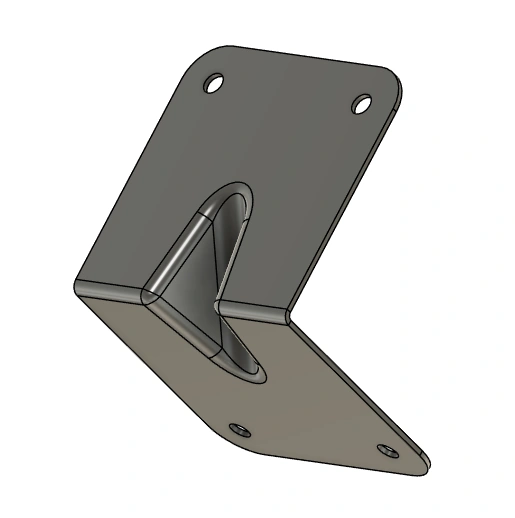
Triangular ribs
Triangular ribs can be used near the bending region, which helps to preserve the strength after applying high-bending stress for deformation. It also reduces the vibration under load.
- Benefits: Increased stiffness, minimal over-deformation, and avoids material distortion.
- Limitation: It is a relatively complex method and requires accurate positioning of ribs to get high strength.
- When to Use: Use to enhance the rigidity and strength of bending sections and for materials requiring high deformation load.
Furthermore, if you want to know which bending method is favourable for high reinforcement, read the analytical elaboration of different sheet metal bending techniques here.
Try Prolean Now!
How to Choose the Right Reinforcement Technique for Sheet Metal Parts?
The performance and longevity of the finished product are influenced by a number of factors, including the choice of reinforcement technique for sheet metal. Consider three major factors while choosing the right sheet metal reinforcement technique: sheet thickness, strength requirements, and stress types.
Material Thickness
While thinner materials work better with techniques like punching holes or grooved seams, thicker metals might need more durable reinforcement techniques like riveting or welding.
Required Strength
Welding or the inclusion of ribs may be advantageous for projects requiring a high degree of strength and durability, such as those involving heavy machinery or construction. On the other hand, techniques like bending or stretching might be more suitable for uses where flexibility is required.
Stress Type
Selecting the best reinforcement plan to overcome these forces requires an understanding of the three types of stresses: Tensile, compressive, and shear strength. Therefore, determine the type of stress that sheet metal parts will experience during application.
What are the Industries Using Reinforced Sheet Metal?
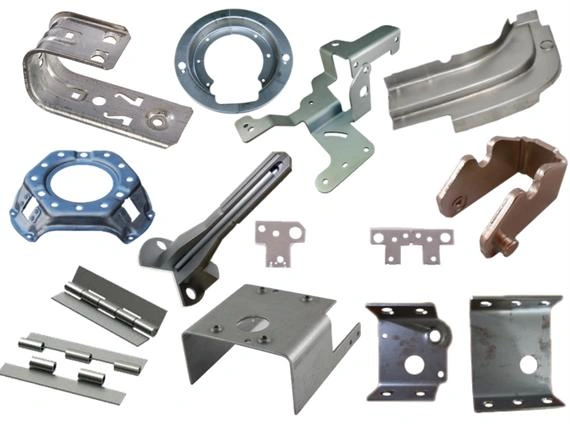
Sheet metal reinforced parts
Industries like construction, automotive, aerospace, and heavy machinery use reinforced sheet metal for their robustness and durability.
The table below outlines application examples of reinforced sheet metal across different industries.
| Industry | Application Examples |
| Automotive | Structural members, subframes, engine splash shields, seat mounting brackets, and door inner panels. |
| Aerospace | Wing skins with stringers and ribs, fuselage skins, floor beams, etc. |
| Construction | Roof decking, partition studs, reinforced cladding panels, metal ceiling panels, and metal formwork |
| Household Appliances | Refrigerator outer panels, washer/dryer drums, mounting frames, dishwasher racks, microwave cavities |
| Heavy Machinery | Access doors with stiffened edges, machine tool frames, enclosures with ribs/gussets, and conveyor housings. |
Design Considerations to Strengthen the Sheet Metal Parts
The design of sheet metal parts also influences the strength of the fabricated item. Any improper placement of holes, insufficient spacing between bent lines, and errors in incorporating any features compromise the structural integrity and even cause failure.
The following are some design considerations to strengthen the metal parts:
- Maintain a uniform sheet thickness throughout the design.
- Do precise sheet metal bending calculations, including bending force, bend radii, clamping force, and punch sequencing.
- The bending radius should be at least equal to the thickness or higher than that to avoid distortion.
- After releasing the deformation force, the sheet metal tends to come back to the initial position, called “springback”. So, consider this effect.
- If your design has flanges, their length should be equal to or greater than four times the thickness.
- Include bend reliefs with depth at least equal to sheet thickness.
- For each bend in your design, ensure its height is greater than twice the thickness (>2T+ R).
- The minimum spacing between two holes should be more than twice of thickness plus the bending radius (>2T+ R).
- Label the dimensions & tolerances clearly in your design. You can also run simulations to see the effects of deformation forces before starting the production.
Mistakes to Avoid During Sheet Metal Reinforcement
Especially, mistakes like incorrect positions of ribs, material incoptiabilty, over-bending, and wrong fastening affect the functionality and performance of sheet metal components.
- Avoid High Bend-Radius: Incorrect bend radius results in over-bending, compromising the strength, and causing cracks near the bend line.
- Incorrect Thickness: The deformation load for forming operations must be chosen based on the sheet metal thickness.
- Improper Ribs Placement: Improper positioning of ribs leads to stress concentration. So, ensure the correct alignment with the bending line.
- Material Incompatibility: The reinforcement elements, like rivets, screw, and bolts, must be compatible with the sheet metal material.
What are the best Ways to Reinforce Thin Sheet Metal Parts?
Regardless of thickness, the metal sheet components are always prone to defects. You can use methods like adding flanges and ribs, which can enhance the resistance against bending deformation and increase the durability.
- Incorporate ribs, bend tapers, and flanges in the correct positions of components.
- Try to minimize the flat sections. Instead, include angles, curvatures, and other similar features.
- If the parts have joints, use a bolt & nut or a welding method.
- Optimize the design to distribute stress uniformly and make effective bending strategies.
Read more: Air Bending Sheet Metal
Is It Possible to Over-Reinforce Sheet Metal?
Yes, it is possible that sheet metal parts can be over-reinforced, exceeding the requirements for functionality. For example, overlapping multiple reinforcements, excessive ribs, and reinforcing the non-critical holes.
Over-reinforcement refers to excessive stiffness compared to what is desired for optimal performance. It might add weight and make the forming process more challenging, and can also produce new stress-concentration points. Therefore, you must define the desired stiffness, strength, and weight to avoid over-reinforcement.
Try Prolean Now!
Get Your Reinforced Sheet Metal Parts from ProleanTech
As we discussed above, producing reinforced & defect-free sheet metal parts requires careful consideration of several factors in every stage, from part designing to die selection and process execution, demanding technical expertise and advanced fabrication equipment.
At ProleanTech, we have an advanced machine shop with CNC bending, stamping, punching, laser cutting, and other capabilities. Whether you want bending steel parts, stamped aluminium, or custom titanium parts, our expert engineers can manufacture them to the desired specifications. For further information, you can contact us or drop your design to get a quote.
Summing Up
Almost every sheet metal part needs reinforcement for performance, aesthetic, durability, and safety. It is applied to various components, ranging from simple metal brackets to intricate panels for the automotive industry. With the use of the right reinforcement technique, you can strengthen your parts and improve the stiffness. At the same time, reinforcement also helps to preserve the original mechanical properties.
However, it is essential to optimize the design, select the appropriate technique, comprehend material properties, and utilize advanced equipment to achieve robust reinforcement.
FAQs
How to make sheet metal rigid?
To make the sheet metal rigid, use reinforcement features like form ribs, beads, corrugations, hems, and flanges. They increase the gauge thickness and also facilitate better stress distribution.
What are the different types of strengths for sheet metal?
The common types of sheet metal strength are shear, ultimate tensile, yield, compressive, and fatigue strength.
How to connect sheet metal parts for reinforcement?
You can use techniques such as riveting, screwing, nut & bolt assembly, welding, and brazing to connect sheet metal parts for reinforcement, depending on the material type and thickness.

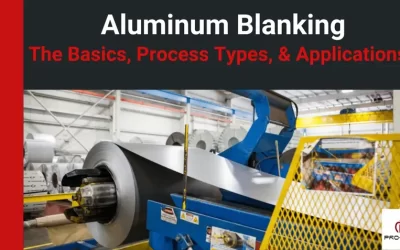
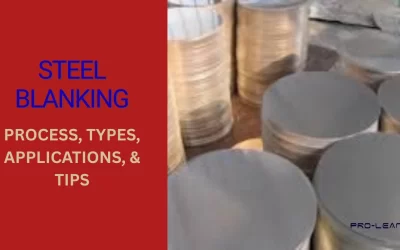
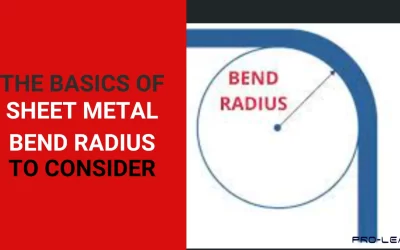
0 Comments